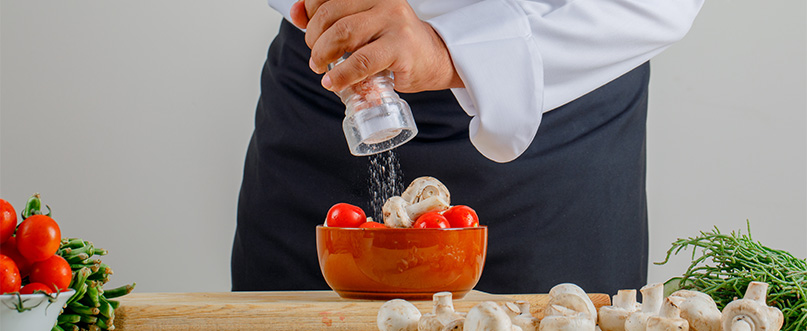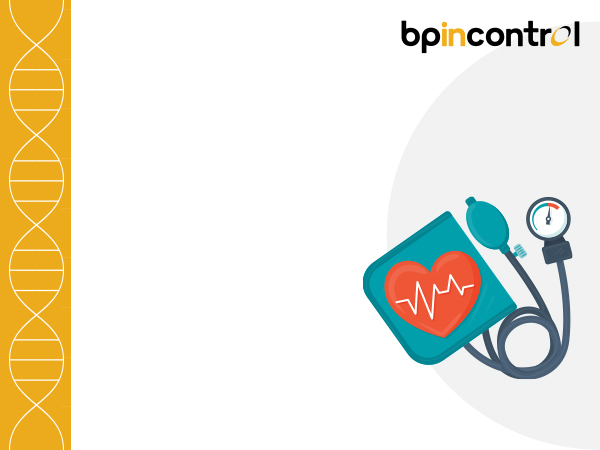The Connection Between Sodium and BP Levels

Table of Contents
Your diet and food intake directly impact your blood pressure and play a prominent role in the development of hypertension. A well-balanced diet can help lower your blood pressure and reduce the amount of medication you need to take.
Salt is the main source of dietary sodium and plays a crucial role in controlling blood pressure levels in our diet. Consumption of salty foods can increase your blood pressure.
A higher sodium intake is associated with a higher risk of incident stroke, fatal stroke, and fatal coronary heart disease. Research conducted on the Indian diet and its relation to high blood pressure found that an average Indian consumes around 10 gm of salt per day. The recommended salt intake per day for a person is 5 gm. About 33% of the urban Indian population suffers from hypertension due to a high sodium diet. Eliminating salt from your diet is not viable, but you can reduce your salt intake to manage hypertension effectively with the help of the tips given below:
-
Choose lower-sodium foods
Reading food labels while shopping should become a habit. Purchase lower-sodium cereals, snacks, and your favourite foods with low-salt options.
- Select foods with 5% or less than 5% of the daily value of sodium
- Avoid foods with more than 20% of the daily value of sodium
-
Use raw fruits and vegetables as snacks
Fruits and vegetables are excellent potassium, magnesium and fibre sources and have low sodium levels. Fruits and vegetables should be consumed raw rather than juiced since juices are devoid of fibre.
-
Avoid table salt
According to a study by the American Heart Association, table salt is around 40% sodium. Avoid adding table salt to your meals. You can also consider the addition of other salt-free seasonings to enhance the taste of your food.
-
Consider alternative spices and herbs
Experiment with various spices and herbs to add flavour to your food instead of regular salt. Garlic, lemon juice or zest, black pepper, dill, dried onion powder, balsamic vinegar, paprika, and truffle oil are tastier alternatives to salt.
-
DASH eating plan
Dietary approaches to stop hypertension (DASH) is a recommended diet rich in fruits, vegetables, whole grains, nuts, legumes, fish, poultry, and low-fat dairy products. The foods recommended in the DASH diet possess high levels of nutrients like potassium, magnesium, calcium, fibre, and protein.
The DASH diet is a low sugar and low sodium diet for high blood pressure and is proven to lower blood pressure levels. The diet also recommends cutting off desserts, high-sugar beverages, high-fat foods, and processed meats. You can significantly reduce the risk of hypertension-related health problems by thoroughly following the DASH diet.
Conclusion
Our body requires sodium in measured quantities to conduct nerve impulses, contract and relax muscles, and for balancing water and minerals properly. However, excess intake of sodium increases the risk of fatal cardiovascular diseases. An Indian diet plan for high blood pressure should be the first consideration for high blood pressure treatment. While there is no permanent cure for hypertension, making necessary tweaks in your diet and lifestyle habits can significantly change since sodium and blood pressure are interrelated.
However, it is always recommended to consult the doctor before switching to any particular diet. You can read more about high blood pressure, preventive measures, and even consult a doctor.
Disclaimer
The information contained in this article is to educate, spread awareness in relation to hypertension and other diseases to the public at large. The contents of this article are created and developed by BPinControl.in through its authors, which has necessary, authorisations, license, approvals, permits etc to allow usage of this articles on The Website. The views and opinions expressed in this article are views, opinions of the respective authors and are independently endorsed by doctors. Although great care has been taken in compiling and checking the information in this article, The Website shall not be responsible, or in any way liable for any errors, omissions or inaccuracies in this article whether arising from negligence or otherwise, or for any consequences arising therefrom. The content of this article is not a substitute for any medical advice. The Website shall not be held responsible or liable for any consequence arising out of reliance on the information provided in the article.


Comments (0)
No comments found.Add your comment